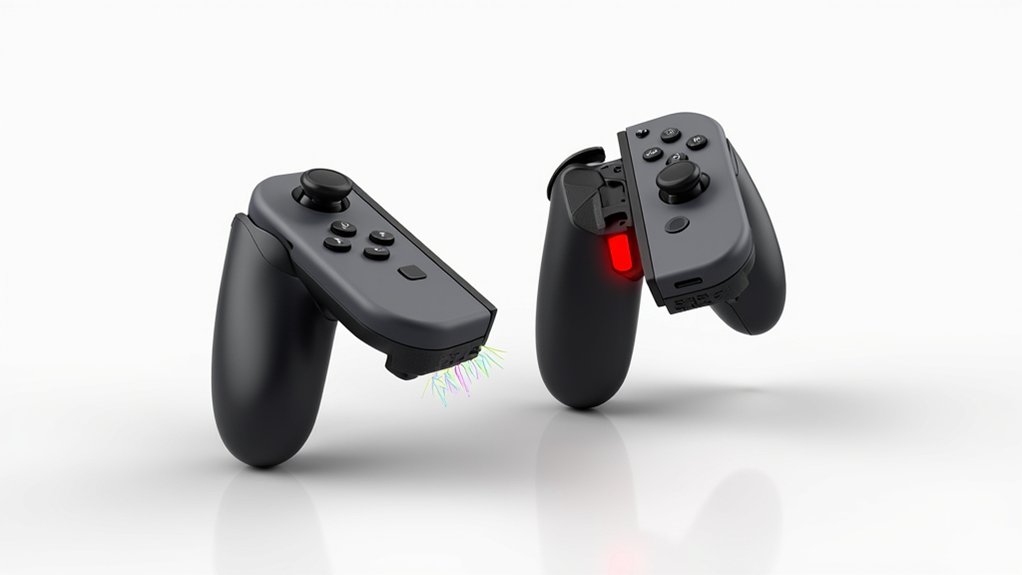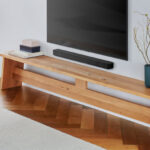As Nintendo fans have long grappled with persistent Joy-Con controller shortages, the upcoming Switch 2‘s redesigned controllers may finally offer a solution to this ongoing supply chain challenge. The new Joy-Cons feature a groundbreaking magnetic connection system, replacing the original sliding mechanism that often led to wear and tear, while incorporating larger SL and SR buttons for improved functionality. The innovative mouse sensor technology adds precision control capabilities never before seen in Nintendo’s handheld controllers.
Nintendo’s innovative magnetic Joy-Con design for Switch 2 aims to solve supply issues while enhancing durability and control functionality.
The simplified design approach represents a considerable departure from the previous generation, with the controllers now connecting directly to the console’s body through magnetic attachments. This streamlined construction process could potentially reduce manufacturing complexity and associated production costs, thereby addressing historical supply chain bottlenecks that have plagued Nintendo’s controller availability. The anticipated all black base model marks a stark shift from the previous generation’s varied color schemes.
Industry analysts suggest that the Switch 2’s Joy-Con design innovations extend beyond mere functionality. The controllers, which are strikingly wider and longer than their predecessors, feature removable side plates that could transform the customization market. This development may reduce the need for consumers to purchase entire Joy-Con sets merely to acquire different colors, potentially alleviating demand pressures on Nintendo’s production lines.
The redesigned Joy-Cons complement the Switch 2’s improved specifications, including its larger 7.9-inch screen and sleek all-black aesthetic. In spite of the size increase, the console maintains a manageable weight of 1.18 pounds, suggesting careful consideration of both form and function in the design process.
Soft rubber glide pads, visible in alleged product images, indicate Nintendo’s attention to ergonomic comfort and durability. The magnetic connection system’s enhanced stability could greatly reduce the frequency of controller replacements, addressing another factor that has historically contributed to supply shortages.
Combined with the potential for more efficient manufacturing processes and the ability to produce standardized base units with customizable plates, Nintendo appears positioned to better manage supply chain dynamics. These improvements suggest that the chronic Joy-Con shortages that have frustrated consumers might finally become a thing of the past when the Switch 2 launches.





